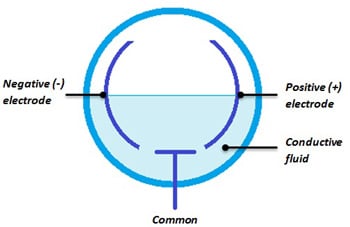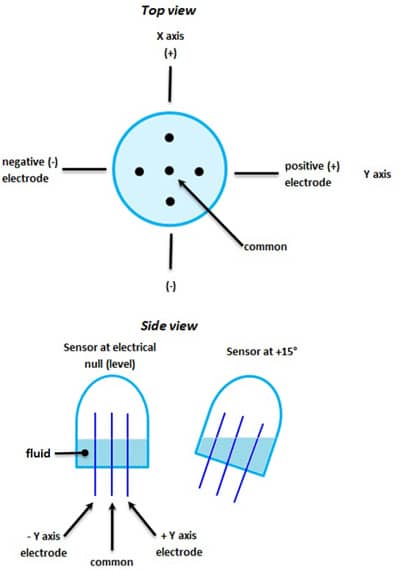Electrolytic tilt sensors are designed to measure pitch and roll movements in a variety of applications. Electrolytic level sensors are electrically resistance potentiometers operating at relatively low frequencies and come in different packages and ranges. Electrolytic tilt sensors can be used under conditions of extreme temperature, humidity and shock for high accuracy measurement. However, they should not be exposed to DC currents which would cause an electroplating action. As non-signal conditioned sensing elements, there are single and dual-axis versions of the electrolytic tilt sensors. These sensing elements can find applications in Aerospace, Construction lasers, Construction equipment, Camera systems, Industrial machine tools, Geophysical tilt meters, Gyroscopes, Oceanographic, Weapon aiming and Military.
The electrolytic tilt sensor is popular in a wide range of applications because of its reliability and capability to offer high accuracy measurement at a low cost. Our high-quality electrolytic tilt sensors are sourced from the Fredericks Company. They are available in three different measurement range; Narrow Range, Mid-Range and Wide-Range depending on the required applications.
Working Principle:
A single axis electrolytic tilt sensor has a glass or ceramic cavity construction with an electrically conductive fluid (electrolyte) filled and sealed inside. The conductivity between a common, positive and negative electrode is proportional to the length of electrode immersed in the fluid as below illustrated.


When the sensor rotates in its sensitive axis, the amount of surface area submerged within the fluid will increase for one electrode and decrease for the other, therefore, creating a radio in the output that is proportional to tilt angle.

Dual-axis (X & Y) sensors exhibit the same fluid characteristics as single-axis devices but two sets of electrodes are required for the complexity of interaction between the axes. A dual axis titls sensor platform consists of a cylindrical glass envelop and 5 pins that act respectively as the common, positive and negative electrodes for X-Y axis.


